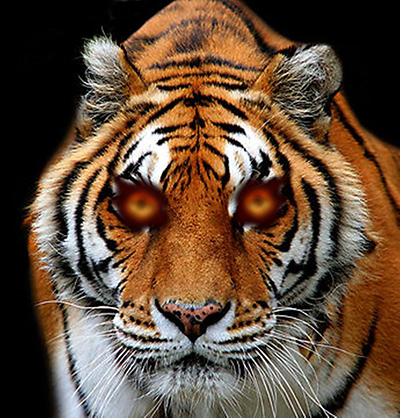Creepy, awesome, yet seemingly simple: take a look at what scientists are calling the first-ever real photo of an actual black hole. The image doesn't look like much. In fact, it looks like something I could crank out with Photoshop. But if the boffins are to be trusted, this is our first real look at a phenomenon that, up to now, has been strongly implied by the mathematics of Albert Einstein and a host of other great minds. Seeing a black hole, as opposed to merely imagining one, is a moment of mysterium tremendum et fascinans for me. The apodictic Platonism of math declared something to be true about the material world; an abstractum boomed, "Let there be a concrētum!"* And there was, and it was a monster. Behold:
Here's the Guardian's take:
Astronomers have captured the first image of a black hole, heralding a revolution in our understanding of the universe’s most enigmatic objects.
The picture shows a halo of dust and gas, tracing the outline of a colossal black hole, at the heart of the Messier 87 galaxy, 55m light years from Earth.
The black hole itself – a cosmic trapdoor from which neither light nor matter can escape – is unseeable. But the latest observations take astronomers right to its threshold for the first time, illuminating the event horizon beyond which all known physical laws collapse.
The breakthrough image was captured by the Event Horizon telescope (EHT), a network of eight radio telescopes spanning locations from Antarctica to Spain and Chile, in an effort involving more than 200 scientists.
Sheperd Doeleman, EHT director and Harvard University senior research fellow said: “Black holes are the most mysterious objects in the universe. We have seen what we thought was unseeable. We have taken a picture of a black hole.”
Our galaxy is only 100,000 light years across; you'd think we'd be able to see the Milky Way's own supermassive black hole (which is the reason why our spiral galaxy looks as if its stars were all circling a drain... because, in a sense, they are), but I guess we can't do that yet because we're staring straight through the galaxy's ecliptic. Were the earth positioned directly above the galactic hub, it might be a different story. In the meantime, we'll have to make do with Messier 87's voracious omphalos, which sits in judgment of our puny planet and its puny human affairs. Carl Sagan wrote eloquently about our smallness in an oft-quoted passage from his Pale Blue Dot: A Vision of the Human Future in Space. Here's an apt excerpt:
That's here. That's home. That's us. On it everyone you love, everyone you know, everyone you ever heard of, every human being who ever was, lived out their lives. The aggregate of our joy and suffering, thousands of confident religions, ideologies, and economic doctrines, every hunter and forager, every hero and coward, every creator and destroyer of civilization, every king and peasant, every young couple in love, every mother and father, hopeful child, inventor and explorer, every teacher of morals, every corrupt politician, every "superstar," every "supreme leader," every saint and sinner in the history of our species lived there--on a mote of dust suspended in a sunbeam.
The Earth is a very small stage in a vast cosmic arena. Think of the rivers of blood spilled by all those generals and emperors so that, in glory and triumph, they could become the momentary masters of a fraction of a dot.
Gargantuan black holes are a brute reminder that there is such a thing as raw power, and whatever we humans consider power is in fact a paltry, gossamer travesty of nature's true might. It's good to be shown, now and then, where we sit in the grand scheme of things.
*Put more simply: the math predicted such a creature, and now we've seen it.








No comments:
Post a Comment
READ THIS BEFORE COMMENTING!
All comments are subject to approval before they are published, so they will not appear immediately. Comments should be civil, relevant, and substantive. Anonymous comments are not allowed and will be unceremoniously deleted. For more on my comments policy, please see this entry on my other blog.
AND A NEW RULE (per this post): comments critical of Trump's lying must include criticism of Biden's or Kamala's or some prominent leftie's lying on a one-for-one basis! Failure to be balanced means your comment will not be published.